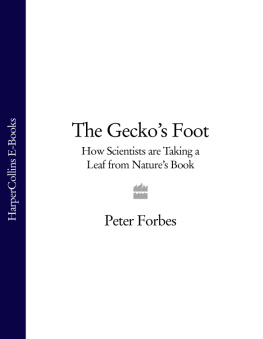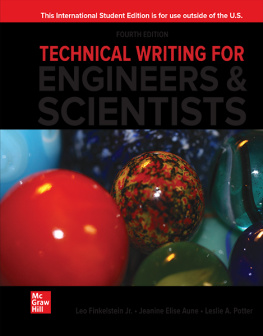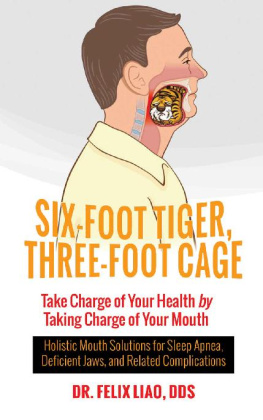CHAPTER ONE
Something New Under the Sun
These Atom-Worlds found out, I would despise Colombus, and his vast Discoveries.
RICHARD LEIGH (16491728), Greatness in Little
Nature is one of our great good words. To do things naturally, to go with the flow, to feel that we are in harmony with the principle that has sustained life on the planet for, according to our best guesses, more than three and a half billion years: all of these are natural (that word again) aspirations. But when we think of how we actually live by means of technology we feel unnatural: all our activities seem to involve forcing nature to do things she would otherwise not have done. We fear that perhaps we are a rogue species: the first one to have broken the bounds of nature.
These psychological feelings may or may not reflect the reality of our situation but there is no doubt that our technology and natures are radically different. Our planes do not fly like birds and insects; although we travel faster than a cheetah, by muscle power alone we are much slower.
Many scientists now believe that it is possible for us to close the gap between our technology and nature. Bio-inspiration is the new science that seeks to use natures principles to create things that evolution never achieved. To do this has entailed understanding nature at a new level a tiny realm, far beneath our vision, and beneath the threshold of even the best optical microscopes.
Throughout human history human beings have been prejudiced creatures, and perhaps we were once biologically programmed to be that way. Despite this, we have learnt to cast aside narrow chauvinisms one by one and to embrace a broader view of our place in the scheme of things. But one set of blinkers remains: as adults we are creatures of a certain dimension mostly 1.51.8 m tall and we cannot help seeing things much smaller or larger than ourselves as remote from our experience. Apparently, we are deeply and stubbornly sizist.
The general acceptance, from the 17th century on, that the Earth was merely a planet of the Sun was supposed to have humbled our human pretensions. And the subsequent awareness of the vast distances of the universe, the number of stars (and, potentially, planets) and the minor-star status of the Sun were supposed to have increased this humiliation. The truth is, it is the things nearest to us that matter most. When we are ill in bed with flu, our horizon shrinks to our own body. And when we are bounding with health, it is pleasure on our own scale that we chase after. The universe can go run itself.
But this book is mostly about small things, not large, and they often seem even more distant than the black holes and supernovae of the deep universe. We find it quite hard to understand that minute creatures such as fleas and midges are fully functional, with a nervous system, a brain, a heart, and all the apparatus of life. In fact, life begins way below the threshold of human vision, and the intricately structured apparatus on which life depends DNA, proteins and countless other molecules is much smaller still.
For most of human history we have fabricated the devices we need on our own scale from simple materials, especially the metals such as iron, copper, zinc and tin. These are chemical elements and they are the same stuff all the way through billions of atoms packed together like snooker balls in a frame, and then another layer on top, and so on ad infinitum. Biological materials, such as wood and cotton, have a much more complicated structure than metals and the intimate molecular structure of these materials was unknown until the 20th century. They were presented to us, more or less ready to use, and we used them without knowing what they were made from.
. By this he meant that even as we ran out of personal space in our human-scale world, there was a paradoxically spacious untapped domain in which our minds could roam, one that was beneath the threshold of our vision. This was the nanorealm, in which objects are between one billionth and one millionth of a metre in size. Feynman suggested that this realm had room enough to do many things of great interest, and that life was already doing them, if only we could see what was going on:
This factthat enormous amounts of information can be carried in an exceedingly small spaceis, of course, well known to the biologistsAll this informationwhether we have brown eyes, or whether we think at all, or that in the embryo the jawbone should first develop with a little hole in the side so that later a nerve can grow through itall this information is contained in a very tiny fraction of the cell in the form of long-chain DNA molecules in which approximately 50 atoms are used for one bit of information about the cell.
It is very easy to answer many of the fundamental biological questions; you just look at the thing! You will see the order of bases in the chain; you will see the structure of the microsome. Unfortunately, the present microscope sees at a scale which is just a bit too crude. Make the microscope one hundred times more powerful, and many problems of biology would be made very much easier.
It must have seemed crazy to many at the time. Feynman blithely asserted that the whole of the Encyclopaedia Britannica could be stored on the head of a pin. Now we can believe this because even if we have not quite got it down to a pinhead, we are not far off with our electronic disk-storage systems. But the micro-electronics revolution was only the first stage of the drive into micro-space. At the time, Feynman looked to biology to make his point because he knew that nature did her most intricate work on a tiny scale. But he also knew that most of the detail was tantalizingly out of reach.
A gecko climbs a vertical glass wall sure-footedly; when it reaches the ceiling it steps onto it and continues, upside-down, without difficulty. From the other side of the glass you can see transverse bands of tissues crossing its feet that alternately grip and release in a mini Mexican wave across the surface of the foot. A leaf of the sacred lotus unfurls in muddy water; as it rises, all the mud rolls off as if magnetically repelled, leaving a pristine surface. From a quarter of a mile away you can see the brilliant blue wings of a Morpho rhetenor butterfly; they are not just blue they shimmer with an iridescent sparkle but analysis reveals no blue pigment in the wings. That same Morpho butterfly takes off and jinks through the air, changing direction abruptly; until 1996, scientists were at a loss to understand how insects like this could fly. According to the well-tried aerodynamic theories that took a Jumbo into the air or flew Concorde at twice the speed of sound, insects did not generate enough lift to fly, but fly they do. And when a heavy insect thuds into a spiders web constructed from filaments about one tenth the diameter of human hair, the web distorts, brings the fly to a standstill and then returns to its original shape, the fly held fast in its sticky capture threads. Human engineering suggests that even if such a gossamer structure could catch an insect, it ought to fling it out again in recoil.
These creatures obviously possess skills and attributes beyond conventional engineering. But if we could find out how they achieve what they do, and learn how to utilize their techniques, it would extend our capabilities unimaginably. But the mechanisms behind these feats were hidden in structures so tiny that no microscope could observe them, and their chemical structures were so complex they defeated all attempts at analysis. As for creating man-made substances with the same properties: it was out of the question.
The dramatic powers of adhesion, self-cleaning, optical wizardry, tough elasticity and aerodynamics shown by these creatures are all highly prized by technologists. Scientists have long admired natures engineering skills. Indeed, the precision of some of natures gadgets takes the breath away: the stinging cells of jellyfishes; the jet engines of squids and cuttlefish; the marine creatures (and the land-based fireflies) that produce light without any heat. But there was no simple way of translating natural mechanisms into technical equivalents.


















